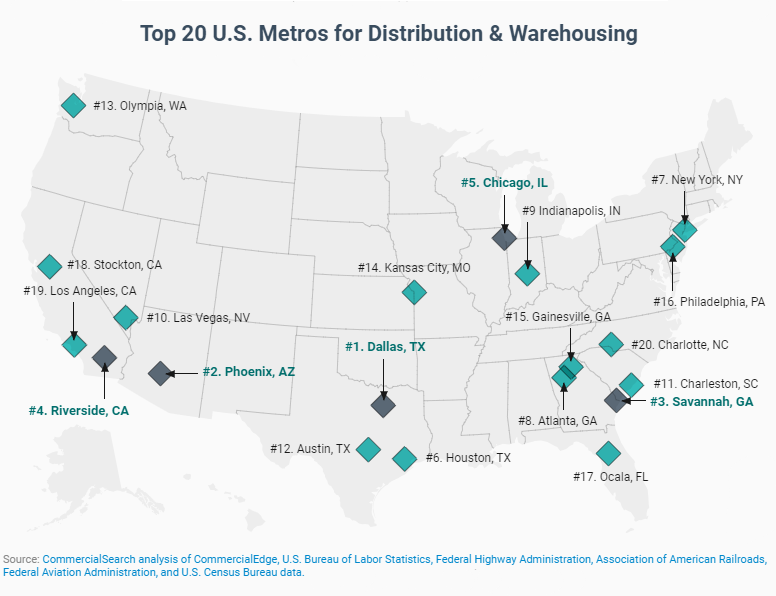
While the distribution and warehousing sector remains resilient despite record supply and economic uncertainty, signs of renewed activity are also evident.
Local factors like population growth and robust logistical infrastructure are further driving development across U.S. distribution hubs. To identify the country’s most active distribution & warehousing areas, the group CommercialSearch selected the 100 largest metropolitan statistical areas (MSAs) by total distribution and warehousing square footage, then evaluated them based on three sets of criteria: distribution and warehouse space inventory, distribution indicators and costs, and logistics infrastructure.
Here are some of the key highlights for the Queen City:
Charlotte concluded the top 20 U.S. metros for distribution and warehousing with a total of 37.5 points.
- One of Charlotte’s key strengths lies in affordability. The average wage for workers in distribution occupations the Charlotte-Concord-Gastonia of $44,540 per year are among the most affordable in the top 20 for businesses.
- Additionally, the average asking rent for industrial space in Charlotte is around $11 per square foot per year, making it an attractive option for businesses seeking cost-effective locations.
- Charlotte’s advantages for distribution and logistics are further supported by its infrastructure, the metro placing among the top 10 for both its number of airports (9) and railways density (68).
- Charlotte features some 5.5 million square feet of new distribution space currently under construction, the metro concluding the top 10 for this metric.
- The metro is also home to over 2,500 distribution related companies and establishments, placing it 9th within the top 20.



